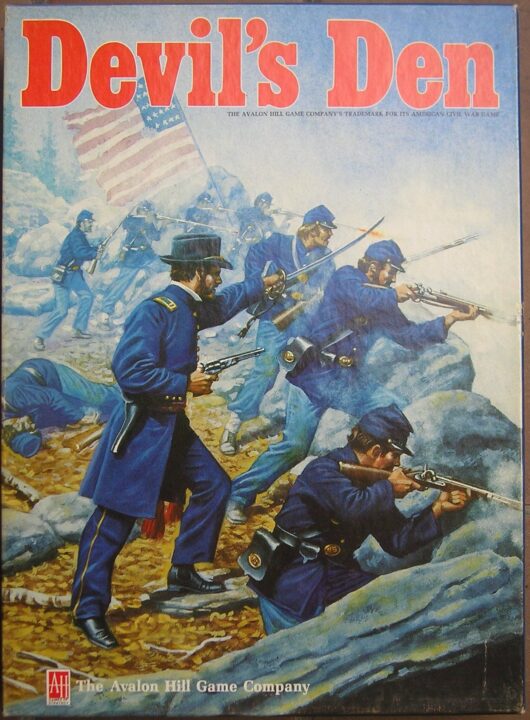Alright, grab your pitchforks and garlic—it’s time for my official review of Devil’s Den! My friends and I spent a few raucous nights getting lost in its ghost-filled hallways and bickering over who sabotaged the last ritual. I’ll break down everything you need to know, including the good, the bad, and that one weird rule no one remembered until halfway through the game (thanks, Steve). If you’re thinking about adding this mysterious romp to your game shelf, read on. You’ll get the real scoop from folks who actually survived the den—well, almost.
How It Plays
Setting Up
First, unfold the board. Give everyone a faction board, their plastic minions, and a pile of event cards. Place tokens on the right spaces and shuffle the devilishly tricky deck. Prepare for some wild looks of confusion, especially if you left the rulebook at the bottom of the box like I did.
Gameplay
Take turns moving minions, grabbing resources, and trying to grab power over the Den. Each turn, players play event cards, scheme, and sometimes team up or turn on each other. There’s a lot of bluffing and a bit too much luck for my taste. I once lost my top minion to a random event, which was not my finest moment. Planning and negotiating are the name of the game, but be prepared for chaos when the events come up.
Winning the Game
The winner is the first player to control the most key locations by the end of the final round or whoever wipes out their rival factions. It’s all about outwitting friends—unless, of course, the devil’s luck decides otherwise. Just remember, gloating too early never ends well. Trust me, I’ve been there.
Want to know more? Read our extensive strategy guide for Devil’s Den.
Game Mechanics and Fairness: Why Devil’s Den Makes or Breaks Your Night
If you’ve ever played Devil’s Den with me, you’ve probably seen me grumble more than once. Not because I lost (okay, maybe a little), but because the game’s mechanics are a wild rollercoaster of clever moments and pure, unfiltered chaos. The premise isn’t complicated—you pick a faction, set up camp, and race to outmaneuver your pals. Easy, right? Well, yes and no.
The first thing that grabbed my attention was the way Devil’s Den balances tactical moves and random events. On my first go, I felt clever for outguessing my friend Jess, only for the game to throw a surprise event card that wrecked my perfect plan. Luck plays a part, and sometimes it feels like it’s holding a sledgehammer.
Now, don’t get me wrong—I love a bit of tension and unpredictability. But if you’re the type who wants to win with sheer grit and skill, Devil’s Den can feel downright unfair. Some factions get weird advantages that make things lopsided, like the ever-annoying Shadow Bats who swoop in just when you think you’ve got things under control. When my buddy Andy grabbed that group, it nearly turned the game into a one-man show.
That said, there are some sweet mechanics here—hidden traps, big plays, and risky moves that pay off if you read your opponents right. If the event deck didn’t have so much power in one shuffle, I would rate this game higher for fairness. But those random swings mean sometimes you’re not rewarded for solid choices, and that can sting.
Next up, I’ll spill the beans on how Devil’s Den forces you to actually talk to other people—and why that’s either genius or a recipe for disaster, depending on your group!
Player Interaction and Strategic Depth in Devil’s Den
One thing that stands out with Devil’s Den is how much you have to watch your friends—and not just to see if they’re cheating! This game rewards attention and sneaky plays. It’s the kind of board game where you stare deep into someone’s eyes across the table and think, Are you about to ruin my entire next turn? That tension is juicy, and my group ended up throwing side-eye at each other every single round.
The game encourages alliances, but they’re so flimsy, you almost expect betrayal every five minutes. We saw shifting truces, temporary pacts, and a lot of backstabbing (sometimes on purpose, sometimes my friend Dave just can’t count). If you like making deals and then spectacularly breaking them, Devil’s Den feels right at home. However, players who hate negotiation or double-crossing might find it a bit stressful. My advice: never trust anyone holding the Shadow Relic card.
On the strategy front, Devil’s Den isn’t just about bluffing. Timing your moves makes a big difference, and each faction needs different tactics. I liked that planning two moves ahead often pays off, but if you sit idle too long, someone else snatches your big move. Bluffing is useful, but so is good old-fashioned math. In our group, the quietest player (Sarah) kept winning, proving this game rewards brains over bravado. Or maybe she’s just better than us and we’re in denial.
So hang on to your dice and steel your nerves, because next up, I’m rolling into all the glory (and a little disappointment) of Devil’s Den’s component quality and artwork!
Devil’s Den: A Visual Feast or Fool’s Gold?
One thing I noticed right away with Devil’s Den—before anybody even betrayed me—was the sheer weight of the box. My friend Dave joked, “Are they hiding real demons in here or what?” Thankfully, all I found inside were chunky cardboard bits, heaps of tokens, and one rulebook that could double as a medieval weapon.
The component quality here? Well, let’s just say it’s built to survive a few pizza stains and the occasional dramatic table flip. The cards feel sturdy and shuffle well, though the little plastic miniatures look like they hit snooze on their evil morning. I mean, my demon leader looked more confused than terrifying. But hey, at least the pieces fit together and you won’t lose them under the couch (unless your couch is also haunted).
Now, let’s talk artwork. Devil’s Den gives off serious metal album cover vibes—lots of reds, blacks, and twisted castles that will make your neighbor peek over the fence in concern. The board itself is busy but clear. Everything has a spooky charm that almost makes losing to your most competitive friend feel okay. Not quite okay, but almost.
So, while I wouldn’t hang the art in my living room, it definitely gets you in that “I’m-doing-bad-things-in-hell” mood. The production quality might not win awards, but it does the job and adds to the chaos we all secretly love.
Now, let’s see if Devil’s Den keeps us coming back for more or ends up haunting the back of the cupboard—next up: Replay value and learning curve!
Devil’s Den: How Many Times Can You Survive the Mayhem?
If you love games that keep you guessing, Devil’s Den will scratch that itch… for a while. The first game with my group was chaotic fun. We barely remembered our own names afterwards. But after a few more rounds, I started seeing the same event cards pop up, and the tactics felt a little samey. It’s not the worst, but if your crew wants endless surprises, this one might run out of tricks sooner than you’d hope.
Now, about the learning curve. Devil’s Den isn’t going to make your brain explode. You can teach new players in under ten minutes—which is good, because my cousin still can’t remember how to play Yahtzee. The player aid cards are a blessing for people who (like me) forget what phase comes next because they’re busy laughing at someone’s terrible dice luck.
That said, mastery isn’t totally out of reach. There’s enough in the rulebook for strategy lovers to gnaw on, especially if your group likes outsmarting each other instead of just rolling dice and yelling. My only gripe? After five or so games, a couple of my friends said, ‘Ok, that’s enough Devil’s Den for tonight. Let’s do something different.’ So don’t expect an endless well of replay soon.
Would I recommend Devil’s Den? For a weekend blast or a game night where variety rules, absolutely. If you’re looking for your next forever game, though, this one’s more of a spicy snack than a five-course meal.
Conclusion
Well, that wraps up my review of Devil’s Den. I’ve played this one with friends who love sneaky moves and a bit of tension (and snacks, always snacks). It’s got good moments when everyone is plotting and second-guessing, and the artwork gives a nice spooky feel to the table. The event cards and some overpowered factions can turn things a bit unfair, which made me sigh a few times. Still, it kept us entertained on a few late nights, and the quick setup meant nobody had to read a rulebook big enough to stop a door. If you’re looking for a tactical game with bluffing and negotiation, and you don’t mind a pinch of luck, Devil’s Den brings a lively mix. But if you rage-quit over unfair swings, maybe steer clear. Thanks for reading, and may your dice always roll high – in the games that deserve it!


